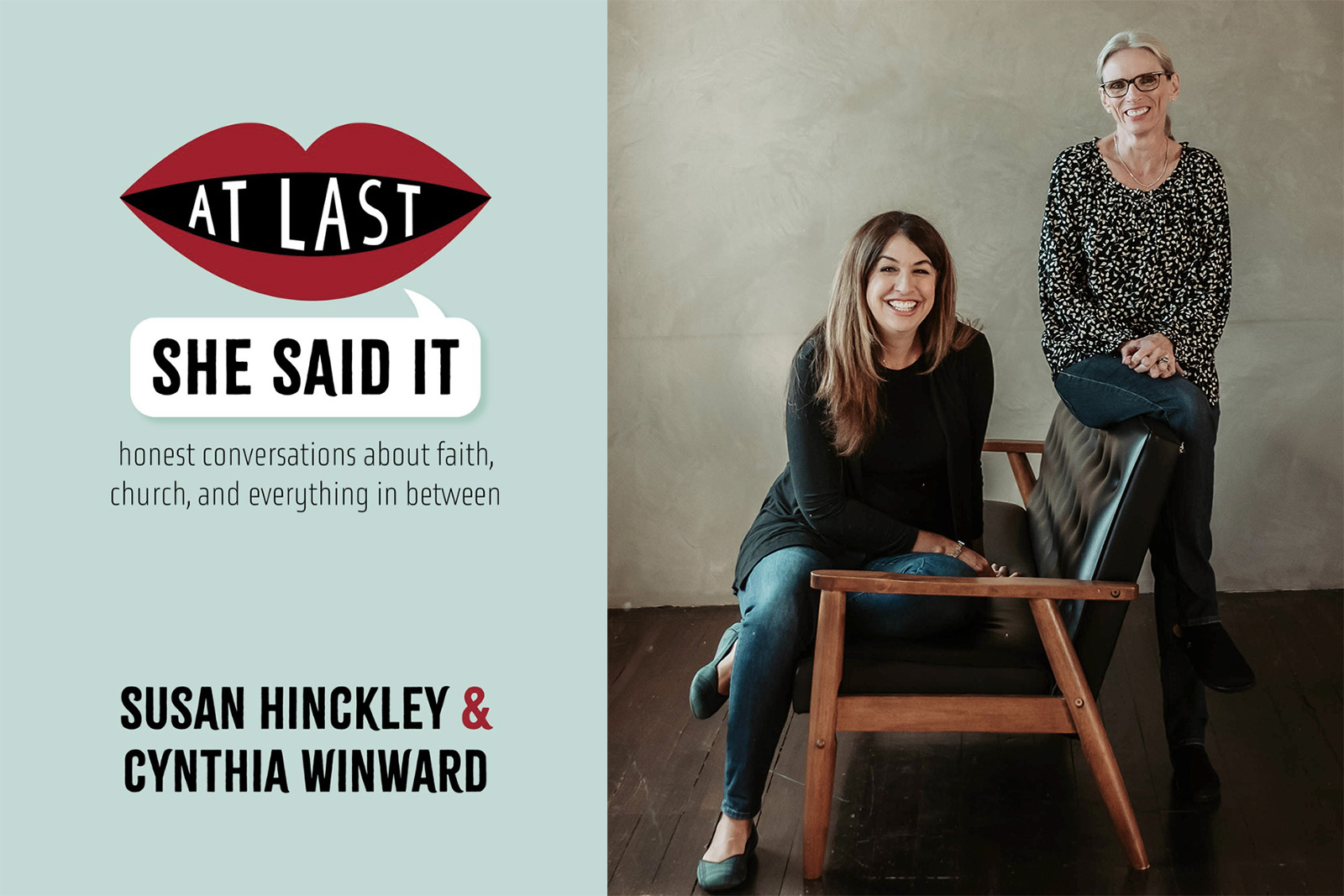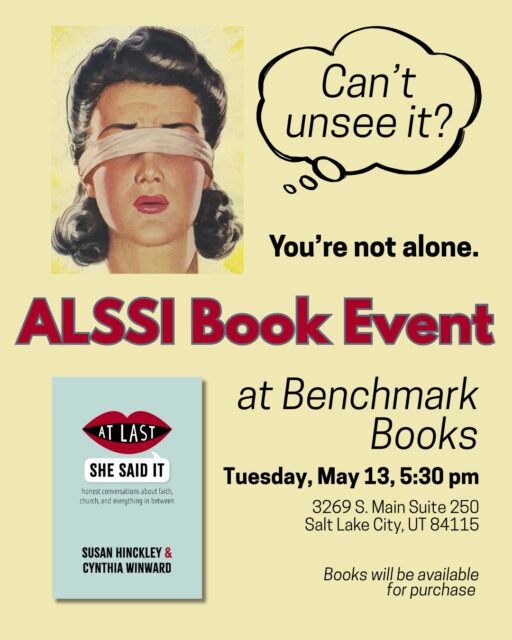
(RNS) — Over the weekend I cheered the runners of the Cincinnati Flying Pig marathon, in my hometown, then learned later that the winner of the women’s division was from Utah. Because Mormons are snoopy and tribal that way, I was curious about whether she was a Latter-day Saint. A 2022 Deseret News article turned up some information. “Eric Nelson wins Deseret News Half Marathon; Tori Parkinson claims women’s division title,” read the headline of the LDS church-owned newspaper.
Of the 19 paragraphs of the 2022 article, the first 16 were about the men’s winner, a Latter-day Saint who grew up in Utah, was a track star in high school and then served an LDS mission. He sounds like a great guy.
Paragraphs 17 and 18 listed the runners-up in the men’s race. And then finally, in the last paragraph of the article, the top three women and their times were listed, with nothing else said about them at all.
Oh, patriarchy. The article, though written by a woman, encapsulated well the invisibility the church has long afforded to women. (I never did learn about Parkinson’s religion, not that her faith affiliation matters. She’s a terrific runner, and she said that Cincinnati was a great city despite the hills here, so clearly she is also a terrific person. She should have gotten equal column inches in the Deseret News piece.)
Whenever I’m feeling down about occurrences like these, which happen on the regular in The Church of Jesus Christ of Latter-day Saints, I turn to one of my favorite podcasts, “At Last She Said It.” Started in 2020, it’s the brainchild of Susan Hinckley and Cynthia Winward, both active members who say they are “women of faith, discussing complicated things.”
Over the past five years, the two have hashed out women’s problems with the temple, with garments, with the lack of representation in leadership. All the things. For many of their listeners, it’s the first time they’ll have gotten to hear Latter-day Saint women saying the quiet part out loud — voicing open discomfort and pain about the ways they’ve tried to shoehorn their lives into a patriarchal structure.
And now they have a book, released last week. “At Last She Said It: Honest Conversations About Faith, Church, and Everything in Between” is a must-read for anyone interested in understanding women’s experiences in the church, and in amplifying their voices.
Winward said the book is another means of tapping into the market of women who want to talk about hard topics in the church. “There are plenty of people who, I can’t believe it in 2025, still don’t listen to podcasts,” she joked in an April 28 interview with both authors, on Zoom. The book joins their podcast, social media presence and live events as another means of reaching the audience.
Hinckley admitted that of the three platforms, the book feels more, well, permanent. “I feel like a podcast is a marvelous project, and I’m really proud of how much content we’ve put into the world over the past five years. But a podcast is not a lasting thing necessarily. We wanted to leave some of this in writing just as a legacy to the ideas that we’ve explored and the conversations we’ve had.” As well, the pair wanted listeners to have something tangible, a tool they can give to friends and family members as a way into tough conversations about women in the church.
Winward envisions women sharing a part of the book with a spouse or a mother-in-law, maybe earmarking a single page, and asking, “Can you just read this page?”
“I think that could change hearts,” she said.
Much of the book’s content is drawn from the podcast, arranged topically around issues like obedience to male church leaders, why and how to speak up in church and claiming your own sacred authority.
Each section comes with endnotes — more than is typical in a book for a general audience. That was a deliberate decision to give women readers the tools to learn more about church history, feminist thought and Christian theology.
“Especially when it comes to things like grabbing their own spiritual authority, we’ve found that Latter-day Saint women are really struggling to have a handle on where they can start with that,” Hinckley explained. “A lot of them just have never really considered that that’s even in their purview. So if we can give them some references that have helped us, then we feel like that just enhances the value as a tool of the book.”
Hinckley said she was always one to question, if quietly, but Winward never questioned much about the faith until her early 40s. “I deferred to leaders in charge,” Winward said.
But obeying male church leaders worked for her, she said, “until it didn’t. I didn’t know where to turn anymore, because everything that had been working for me had stopped. I didn’t know what to do.”
She started looking inside herself to understand her evolving relationship with God, a long process that involved reexamining each aspect of her faith. For a while, she felt “broken,” because her faith no longer fit into the boxes prescribed by the church. Nor was she willing to surrender her spiritual autonomy any longer.
Hinckley said this is a common process when women begin to question their beliefs. A female family member recently told Hinckley that General Conference hadn’t been a spiritual experience for her this year, and that she was finding Sunday school uninspiring, so she must no longer be a spiritual person. If women have lost interest in certain vehicles the church provides for spiritual growth, Hinckley wants them to know that that doesn’t mean they’ve lost their connection to God. They’re not “deficient in some way,” she said.
It does mean they’re ready to do the work of discovering what does bring them closer to the divine.
Winward said her own deep dive wasn’t just about religion but about her identity and her role as a woman. When she began to question that, she started “pulling the thread and seeing what other groups of people were also being hurt.”
She hadn’t ever thought about that before. “By all accounts, I fit in as the ultimate Latter-day Saint. I bake bread. I had a sewing business, I had the kids, I had the minivan. I was a stay-at-home mom. I had all the big callings. I was pretty mainstream. And then all of a sudden when it stopped working for me, I was like, ‘Who else isn’t this working for? And how are they navigating this crash?’”
Hinckley’s faith didn’t shift suddenly the way Winward’s did. When Hinckley was in her early 40s, her daughters started to leave the church, leaving her “pretty disillusioned by it all.”
“Once your family leaves the church,” she said, “the shine comes off a lot of the things that we talk about and make so important. The temple, for instance, is pretty hard when your kids aren’t there anymore.”
People at church now seemed to regard her kids as “a disappointment somehow,” which Hinckley found infuriating because they are, she said, “astonishing” human beings.
Her daughters’ exits helped Hinckley find her own voice. She’d always struggled with certain things in the church, but privately. Now she found that kind of silence suffocating. “Pretending that things were still OK became unbearable for me. I describe it, not really as a faith crisis, because I wouldn’t say that my beliefs necessarily ever shifted or became that challenging. I just needed to be able to engage with it all more honestly and openly, and I’d never felt at liberty to do that. That’s what happened for me: The wheels came off my own silence, and I had to speak.”
And now, to write. The “At Last She Said It” book is now available, and Hinckley and Winward have in-person events planned in Salt Lake City (May 8 and 13); Provo, Utah (May 17); Mesa, Arizona (May 30); and Denver (June 1).

One of the book launch events for “At Last She Said It,” in Salt Lake City on May 13. (Courtesy image)
Related:
“At Last She Said It” podcast helps Mormon women find their voices
What does new LDS messaging really say about women in the church?
